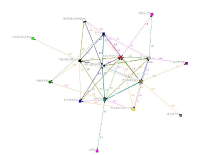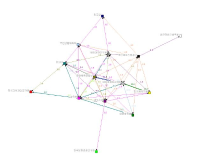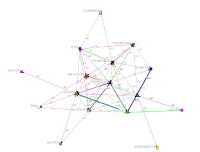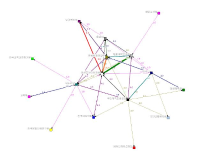Korea Sports Association for the Disabled have a responsibility for sports promotion of the disabled. After the launch of the organization 10 years have passed and now there ara a lot of achievement and challenges. By applying the system theory there ware derived many performance and ahallenge. First, in terms of system boundaries the organization requires an understanding of several related businesses within government departments and sports organizations to promote cooperation between business needs to enhance the professionalism. Second, in terms of the production system the organization requires specialization of the purpose, division of labor according to the principles of the process of professionalization, specialization according to the needs of beneficiaries, according to demographic characteristics. Third, in terms of keeping system the degree of formalization of business rules and procedures to enhance the selection, training, compensation of employees is necessary to improve the system and gather the information you need to perform tasks. Forth, in terms of adaptive systems research budget in view of the research need to be carried out as planned and secured by business efficiency and effectiveness, and to ensure accountability through evaluation utilizing external experts in departmental organizational diagnosis and assessment. Fifth, in terms of organization and management system there are necessary to affiliate effort to resolve the conflict between the hierarchical and reward trade-offs and goal setting and the use of resources allocation, substantiality of performance evaluation. Sixth, Five kinds of systems that require priority sector innovation efforts in the production system, management system, adaptive systems, maintenance systems, boundary systems in order.

The purpose of this study was to investigate structural characteristics and participants` roles & functions of sport policy network in Korea, by social network analysis on structural characteristics of sport policy network and AHP analysis on participants` roles and functions. For that, 21 executive officers from 19 organizations and agencies related to sports policy were selected as study subjects, and, the materials collected from whole twice surveys on them were analysed by Ucinet 6 and Expert Choice 2000 program. As the results, the governmental organizations like the Blue House and Ministry of CultureㆍSports and Tourism composed the central position group of sport policy network of Korea, and took the main functions of planing and arrangement within their main roles of policy agenda formation and policy decision, so, sport policy network of Korea could be called centralized network by government. And, in cases of private agencies, Korea Sports Council composed the central position group only in policy network of professional sport, Korea Council of Sport for All of sport for all, and Korea Sports Association for the Disabled of disability sport, and, each of them took the main roles and functions of policy execution in their fields, so, it was obvious that the private agencies were divided into their own sport policy areas.




PURPOSE This study aims to analyze research trends on the social capital in sports. METHODS A total of 69 papers published until December 2020 were selected as research subjects. Further, Excel, KrKwic software, and NetDraw function of the UCINET 6 program were used for analysis. RESULTS First, social capital research on sports has shown quantitative growth since 2010. Second, the studies were conducted on sports participants such as general, elderly, college students, adolescents, foreigners, and the disabled, showing the highest frequency of research subjects. Third, quantitative research conducted based on the research method were several. Fourth, single-author studies were the highest. Fifth, as the result of the analysis on the publication journal, the Journal of the Korean Physical Education Association was shown the highest. Sixth, due to frequency analysis of the thesis keywords, “social capital,” “sports participation,” “action intention,” “social capital type,” “living sports participation,” and “youth” were shown the highest. Seventh, as a result of centrality analysis between keywords through the network analysis, “sports participation” in connection centrality, “health-promoting lifestyle” in proximity centrality, and “sports participation” in mediation centrality were found as the highest. CONCLUSIONS The significance of social capital in sports is more important than others because it is a fundamental element for creating a culture where more people can enjoy sports moderately in Korea, where capitalism and liberal democracy were adopted as the governing system. Therefore, this study can be a vital resource significantly contributing to the understanding and active use of social capital, a significant factor in developing sports in Korea.